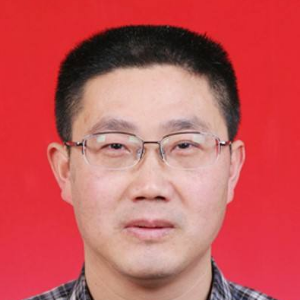Title : Photosynthetic bicarbonate photolysis masked by the rapid oxygen isotopic exchange between water and bicarbonate
Abstract:
Plant photosynthesis is the most important biochemical reaction on earth. It drives the biogeochemical cycle of all elements on earth and is the only chemical process in nature that can convert light energy into chemical energy. The photosynthetic oxygen evolution is a key step in photosynthesis, continuously providing oxygen for global organisms. There is currently much debate about the photosynthetic oxygen evolution theory of plants. Specifically, whether the photosynthetic oxygen evolution of plants comes from water or bicarbonate, or both. This photosynthetic theory is based on the classic photosynthetic oxygen evolution experiment labeled with 18O by Ruben et al. The premise of this conclusion is that there is little or no exchange of oxygen isotopes between bicarbonate and water during photosynthetic oxygen evolution in plants. However, chloroplasts contain diverse carbonic anhydrases, and the dehydration and hydration of thylakoid carbonic anhydrase depend on pH. These characteristics of photosystem ? and thylakoid carbonic anhydrase allow rapid isotopic exchange of oxygen between OH, COOH, O-O, C=O, and other groups in the photosynthetic oxygen evolution system labeled with 18O. We used bi-elemental (carbon and oxygen) bidirectional isotope tracer culture technology to demonstrate that, depending on the culture conditions, microalgae undergo complete, partial, or completely no exchange of oxygen isotopes between bicarbonate and water during photosynthesis. This indicates that the possibility of bicarbonate photolysis releasing oxygen cannot be excluded during photosynthesis. Bicarbonate photolysis can better explain the bicarbonate effect, where the oxygen evolution rate of hill reaction increases several times or even more than ten times under the stimulation of bicarbonate. The complete exchange of oxygen isotopes between bicarbonate and water can reasonably explain the 18O labeled experiments of photosynthetic oxygen evolution so far, with the theory of equal contribution of bicarbonate photolysis and water photolysis in photosynthetic oxygen evolution. It is also powerful evidence for modifying the Kok-Joliot cycle model into a new model involving one bicarbonate molecule and one water molecule. The completely no exchange of oxygen isotopes between bicarbonate and water can reasonably explain the Dole effect, where the 18O enrichment of O2 in the atmosphere is nearly 24‰ higher than that in seawater. In addition to oxygen evolution, bicarbonate photolysis is also the starting point of photosynthetic inorganic carbon assimilation. The equal contribution of bicarbonate photolysis and water photolysis in photosynthesis provides a theoretical basis for the construction of a new type of artificial photosynthetic reactor coupling light and dark reactions.
Audience Take Away Notes:
- This study will help the audience better understand the photosynthesis of plants, the carbon biogeochemical cycle, and the Dole effect
- This study will help the audience better understand the process of photosynthetic oxygen evolution in plants, as well as the bicarbonate effect and the Kok-Joliot cycle during photosynthetic oxygen evolution
- This study will help the audience better understand the coordination between the light reaction and the dark reaction during photosynthesis
- This study provides a practical solution to the construction of a new type of artificial photosynthetic reactor coupling light and dark reactions



